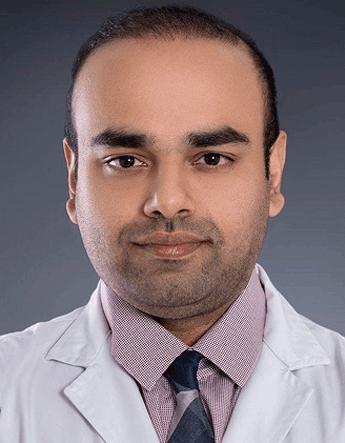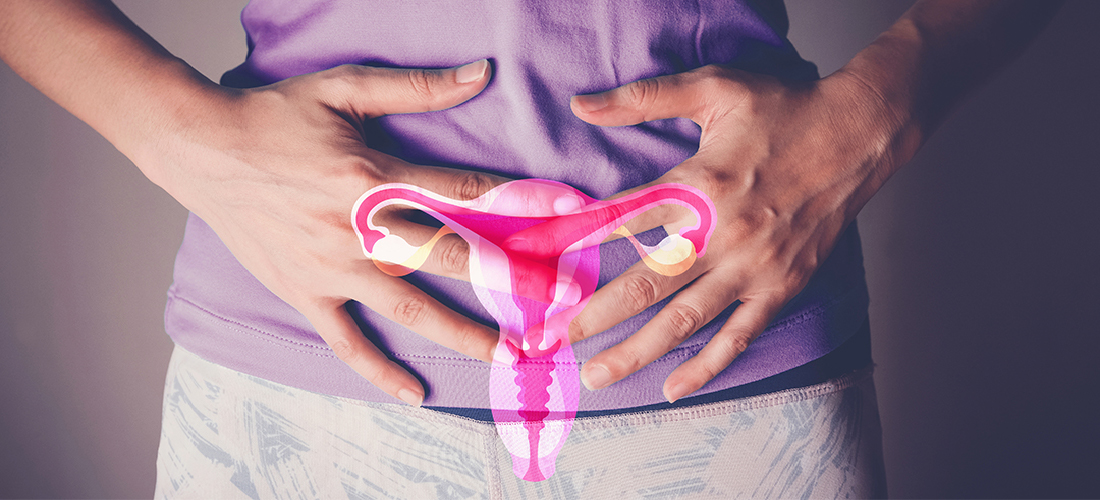Uterine Fibroids
Uterine fibroids are common growths of the uterus. They often appear during the years you're usually able to get pregnant and give birth. Uterine fibroids are not cancerous, and they almost never turn into cancer. They aren't linked with a higher risk of other types of cancer in the uterus either.
Common symptoms of Fibroids
Many people with uterine fibroids don’t experience any symptoms and may only discover them during a routine pelvic exam or an ultrasound. However, when symptoms are present, they may vary depending on the size, location, and number of fibroids. Common symptoms include:
Heavy or painful periods
Longer or more frequent menstrual cycles
Pelvic pressure or pain
Frequent urination or difficulty emptying the bladder
Bloating or enlargement of the lower abdomen
Constipation
Lower back pain or pain during intercourse
Causes
The exact cause of uterine fibroids isn’t known, contributing factors include:
- Hormones
- Genetic changes
- Extracellular matrix (ECM)
It’s believed that fibroids originate from a single muscle cell in the uterus that repeatedly divides.
Risk factors
Anyone of reproductive age can develop fibroids, but certain factors may increase the risk:
- Having a close relative with fibroids increases your risk.
- Starting your period before age 10 may raise the risk.
- Obesity, low vitamin D levels, high intake of red meat, low intake of fruits and vegetables, and alcohol consumption may also play a role.
Types
Fibroids are classified based on their location in the uterus:
- Intramural: Within the muscular wall of the uterus
- Submucosal: Just under the inner lining of the uterus, bulging into the uterine cavity
- Subserosal: On the outer surface of the uterus
- Pedunculated: Attached to the uterus by a stalk-like structure
Prevention
It might not be possible to prevent uterine fibroids.
It may be able to lower your fibroid risk with healthy lifestyle changes. Staying at a healthy weight, regular exercise and a balanced diet with plenty of fruits and vegetables can help.
Diagnosis
Fibroids are often found during a routine pelvic exam. If fibroids are suspected, your doctor may order further tests, such as:
- Ultrasound: Uses sound waves to create images of the uterus, done via the abdomen (transabdominal) or through the vagina (transvaginal).
- MRI: Provides detailed images of the uterus and fibroids, often used for larger fibroids or those nearing menopause.
- Lab tests: If you have unusual bleeding, your doctor may check for anemia or hormone imbalances.
It is important to see a doctor in case of:
- Persistent pelvic pain
- Heavy or painful periods
- Spotting between periods
- Trouble emptying your bladder
- Fatigue or weakness from possible anemia
Treatment Options
Not all fibroids need treatment. If they cause symptoms, several effective treatments are available, many of which are minimally invasive.
- Uterine Artery Embolization: Tiny particles are injected into the arteries that supply blood to fibroids, causing them to shrink. Recovery is usually quick.
- Laparoscopic or Robotic Myomectomy: Fibroids are removed through small incisions in the abdomen using specialized tools. This option preserves the uterus.
- Hysteroscopic Myomectomy: Used for fibroids inside the uterus (submucosal). Instruments are passed through the vagina and cervix to remove fibroids.
- Endometrial Ablation: Destroys the lining of the uterus to reduce heavy menstrual bleeding. Pregnancy is unlikely afterward and not recommended.
- Hysterectomy: Complete removal of the uterus. This is the only permanent solution for fibroids but also ends the ability to become pregnant. Ovaries may or may not be removed.
Why consider treatment for fibroids?
Ignoring fibroids doesn’t make them go away. Over time, they can grow larger, worsen symptoms, and narrow your treatment choices. Here’s why seeking timely care matters:
Heavy periods that affect daily life
Pelvic pain, bloating, or pressure
Frequent urination or constipation
Impact on fertility or pregnancy plans
Fibroids tend to grow if left untreated, limiting non-surgical options
How RIVEA treats fibroids
At RIVEA Vascular Institute, we offer Uterine Fibroid Embolization (UFE) as a safe, uterus-preserving alternative to surgery. Here’s how the procedure works:
- Performed by an interventional radiologist using advanced imaging guidance
- A tiny catheter is inserted through a small puncture in the groin or wrist artery
- The catheter is guided to the uterine arteries supplying blood to the fibroids
- Tiny particles are injected to block these arteries, cutting off the fibroid’s blood supply
- The fibroids gradually shrink over weeks, relieving symptoms
Learn more about Uterine Fibroid Embolization (UFE)
Why RIVEA
RIVEA offers advanced and effective uterus-sparing, minimally invasive treatments as alternatives to traditional options like hysterectomy or myomectomy with significantly less risk, pain, and recovery time. With a patient-centred approach that considers each woman's unique needs, fertility goals, and overall health, RIVEA's specialized team delivers exceptional outcomes for patients experiencing heavy menstrual bleeding, pelvic pain, or pressure. Our commitment to personalized treatment plans ensures that women suffering from fibroids receive the advanced care they deserve, typically allowing them to return to normal activities within a week.
Click here to learn more about:
Uterine Fibroid Embolization (UFE)
For any inquiries, post your query here:
Ask Rivea
Contact us today to explore your options.
Call Now
Our Team
-

Dr. Arjun Reddy
MBBS, MD
Chief Interventional RadiologistDr. Arjun Reddy is a highly accomplished Interventional Radiologist with extensive international training and a track record of pioneering minimally invasive, image-guided procedures in India.
View Profile Book an Appointment



